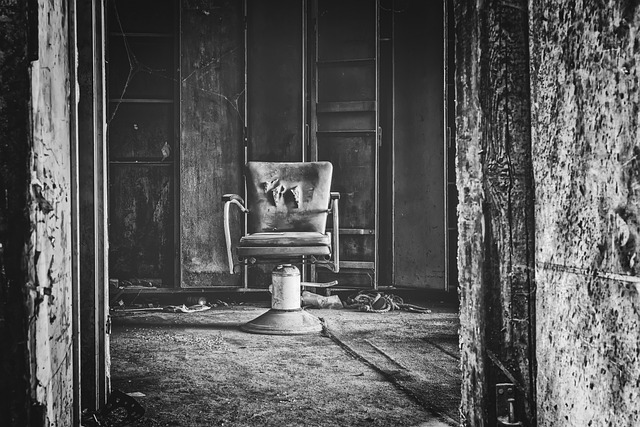Are you tired of tossing and turning all night, desperately longing for a good night’s sleep? Look no further! In this article, we will explore the art of personalizing your home environment to create the perfect sanctuary for optimal sleep. Imagine transforming your bedroom into a cozy haven that lulls you into a deep slumber as soon as your head hits the pillow.
First and foremost, let’s talk about lighting. Natural light has a profound impact on our sleep-wake cycle, so it’s essential to harness its power during the day. Open your curtains wide, allowing sunlight to flood your room and energize your body. Come evening, switch to softer, dimmer lights that mimic the warm glow of the setting sun. This signals to your brain that it’s time to wind down and prepares you for a restful night ahead.

Now, let’s delve into the realm of scents. Aromatherapy can work wonders when it comes to creating a serene sleep environment. Lavender, chamomile, and jasmine are known for their calming properties. Add a few drops of essential oil to a diffuser or spritz some lavender mist on your pillow to create a soothing atmosphere that drifts you off to dreamland.
Clutter can be a silent saboteur of sleep. Keep your bedroom free from unnecessary distractions and create a minimalist space that promotes tranquility. Remove electronic devices that emit blue light, such as smartphones and TVs, from your sleeping area. Instead, opt for a good book or a relaxing meditation practice to help you unwind before bedtime.
Lastly, consider the temperature of your sleep haven. The ideal room temperature for optimal sleep ranges between 60 to 67 degrees Fahrenheit (15 to 19 degrees Celsius). Keep your bedroom cool and cozy by using breathable bedding materials and adjusting the thermostat accordingly.
By personalizing your home environment with these simple yet effective tips, you can transform your bedroom into a sleep sanctuary. Remember, a good night’s sleep is within your reach, and with a little effort, you can wake up refreshed, rejuvenated, and ready to conquer the day. So, why wait? Start creating your personalized sleep haven today!
Unlocking the Secrets to a Restful Night: How to Personalize Your Home Environment for Optimal Sleep
Are you tired of tossing and turning all night, desperately searching for the secrets to a restful sleep? Look no further! In this article, we will uncover the key to unlocking a peaceful night’s rest by personalizing your home environment. By making a few simple adjustments, you can create an oasis of tranquility that promotes optimal sleep.
First and foremost, let’s talk about your bedroom. It should be a sanctuary dedicated to relaxation and rejuvenation. Start by decluttering your space and removing any distractions that might interfere with your sleep. A tidy room not only looks appealing but also helps clear your mind before bedtime.
Now, let’s focus on lighting. Natural light is essential for regulating our circadian rhythm, so make sure to let in as much daylight as possible during the day. In the evening, switch to softer, warm-toned lights to signal to your body that it’s time to wind down. Consider using blackout curtains or an eye mask to create complete darkness while you sleep, ensuring a deeper and more restorative rest.
Next, let’s address the elephant in the room: noise. Unwanted sounds can disrupt your sleep patterns and leave you feeling groggy in the morning. Invest in a pair of earplugs or try using a white noise machine to drown out external disturbances. Alternatively, you can embrace the soothing power of nature by playing gentle rainfall or calming ocean waves through a sound machine or smartphone app.
Temperature plays a crucial role in achieving quality sleep. Your bedroom should be cool, ideally between 60 to 67 degrees Fahrenheit (15 to 19 degrees Celsius). Adjust your thermostat accordingly or use a fan to create a comfortable sleeping environment. Additionally, choose bedding materials and pillows that suit your preferences and keep you cozy throughout the night.
Finally, let’s discuss the importance of creating a bedtime routine. Establishing a consistent pattern of winding down before bed can signal to your body that it’s time to sleep. Consider incorporating relaxing activities such as reading a book, taking a warm bath, or practicing gentle stretches into your evening ritual.
By personalizing your home environment with these tips, you can unlock the secrets to a restful night’s sleep. Remember, quality sleep is a precious commodity that directly impacts your overall well-being. So go ahead and transform your bedroom into a sleep haven, and prepare to wake up feeling refreshed and ready to conquer the day!
Sleep Like a Baby: Transforming Your Bedroom into a Sleep Sanctuary
Are you tired of tossing and turning all night, yearning for a peaceful slumber? Look no further! In this article, we will delve into the secrets of transforming your bedroom into a sleep sanctuary. Get ready to sleep like a baby!
Creating the perfect ambiance is crucial when it comes to achieving quality sleep. Start by decluttering your bedroom. Remove any unnecessary items that might distract your mind. Remember, a clean and organized space promotes tranquility and relaxation.
Once you’ve cleared the clutter, focus on the lighting. Soft, warm lighting can work wonders in lulling you into a deep sleep. Consider investing in dimmer switches or opt for table lamps with adjustable brightness. These will help mimic the natural progression of daylight, preparing your body for rest.
Next up, let’s talk about colors. Choose soothing hues like light blues, soft grays, or gentle greens. These colors have a calming effect on the mind and can create a serene atmosphere. Avoid bold and vibrant shades, as they tend to stimulate rather than relax.
Now, let’s address the elephant in the room – your mattress. A comfortable and supportive mattress is essential for a good night’s sleep. Take the time to find the right firmness level and material that suits your preferences. Don’t forget to replace your pillows regularly to maintain optimal comfort.
No sleep sanctuary is complete without proper sound insulation. Unwanted noise can disrupt your sleep patterns and leave you feeling groggy in the morning. Consider using earplugs, white noise machines, or even a fan to drown out external sounds and create a peaceful environment.
Lastly, think about the temperature of your sleep haven. Keeping the room cool, around 65-68 degrees Fahrenheit (18-20 degrees Celsius), can promote better sleep. Invest in breathable bedding materials like cotton or bamboo to aid in temperature regulation.
By decluttering, choosing the right lighting, colors, and bedding, and ensuring a quiet and comfortable environment, you can transform your bedroom into a sleep sanctuary. So, why wait? Start implementing these tips today and get ready to bid farewell to sleepless nights. Sleep like a baby and wake up refreshed and revitalized each day!
From Chaos to Calm: Designing Your Home for Better Quality Sleep
Are you tired of restless nights and waking up feeling groggy? The secret to better quality sleep could be right in your own home. Creating a peaceful and calming environment can significantly improve your sleep patterns and overall well-being. In this article, we will explore the art of designing your home for better quality sleep.
When it comes to creating a sleep-friendly space, one of the key areas to focus on is your bedroom. Start by choosing soothing colors for the walls, such as soft blues or muted greens. These hues have a calming effect on the mind and promote relaxation. Avoid bold and vibrant colors that may stimulate your senses and hinder sleep.
Next, consider the lighting in your bedroom. Natural light during the day can help regulate your internal body clock, so it’s important to allow as much natural light in as possible. However, when it’s time to wind down, opt for blackout curtains or blinds to block out any external sources of light. You can also incorporate dimmable lights or bedside lamps with warm, soft lighting to create a cozy and tranquil ambiance.
Another crucial element to pay attention to is your mattress and bedding. Investing in a comfortable and supportive mattress can make all the difference in achieving a restful sleep. Choose bedding made from breathable and high-quality materials, such as cotton or bamboo, to help regulate your body temperature throughout the night.
To truly transform your bedroom into a sleep sanctuary, decluttering is essential. A cluttered space can lead to a cluttered mind, making it difficult to relax. Keep your bedroom tidy and organized, and consider incorporating storage solutions to keep belongings out of sight.
Lastly, don’t forget about the importance of sound. External noises can disrupt your sleep, so consider using white noise machines, earplugs, or even a fan to create a soothing background noise that helps drown out disturbances.
By implementing these design tips, you can turn your chaotic bedroom into a serene haven that promotes restful sleep. Remember, a peaceful environment plays a significant role in improving the quality of your sleep and enhancing your overall well-being. So start designing your home for better sleep today and wake up feeling refreshed and rejuvenated each morning.
The Science of Slumber: A Guide to Tailoring Your Home for Improved Sleep

Your bedroom should be a sanctuary dedicated solely to rest and relaxation. To achieve this, start by focusing on your mattress. It’s essential to invest in a high-quality, supportive mattress that suits your preferences. Whether you prefer a firm or plush surface, finding the right one can make a world of difference in the quality of your sleep.
Next, let’s shed some light on lighting. Natural light regulates our internal body clock, so try to maximize exposure during the day. In the evening, opt for dimmer, warmer lighting to signal your brain that it’s time to wind down. Consider installing blackout curtains or blinds to block out any disruptive light sources that may interfere with your slumber.
Temperature control is another key aspect of optimizing your sleep environment. The ideal room temperature for most people falls between 60 and 67 degrees Fahrenheit (15-19 degrees Celsius). Experiment with different bedding materials, such as breathable cotton or moisture-wicking fabrics, to find what keeps you cool and comfortable throughout the night.
Noise can be a major disruptor to a good night’s sleep. If you live in a noisy neighborhood or have a partner who snores, consider using earplugs or investing in a white noise machine. These devices create a consistent, soothing sound that masks background noise, helping you drift off into a deep, undisturbed slumber.
Lastly, let’s talk about decluttering. A cluttered bedroom can contribute to stress and anxiety, making it difficult to relax. Keep your sleep environment tidy and organized, creating a serene atmosphere conducive to restful sleep. Consider incorporating soft colors, calming artwork, and natural elements such as plants to enhance the overall ambiance.
Remember, everyone’s sleep needs are unique, so feel free to experiment and tailor these tips to your preferences. By optimizing your sleep environment, you’ll create the perfect conditions for a restorative night’s sleep, waking up refreshed and ready to conquer the day ahead.